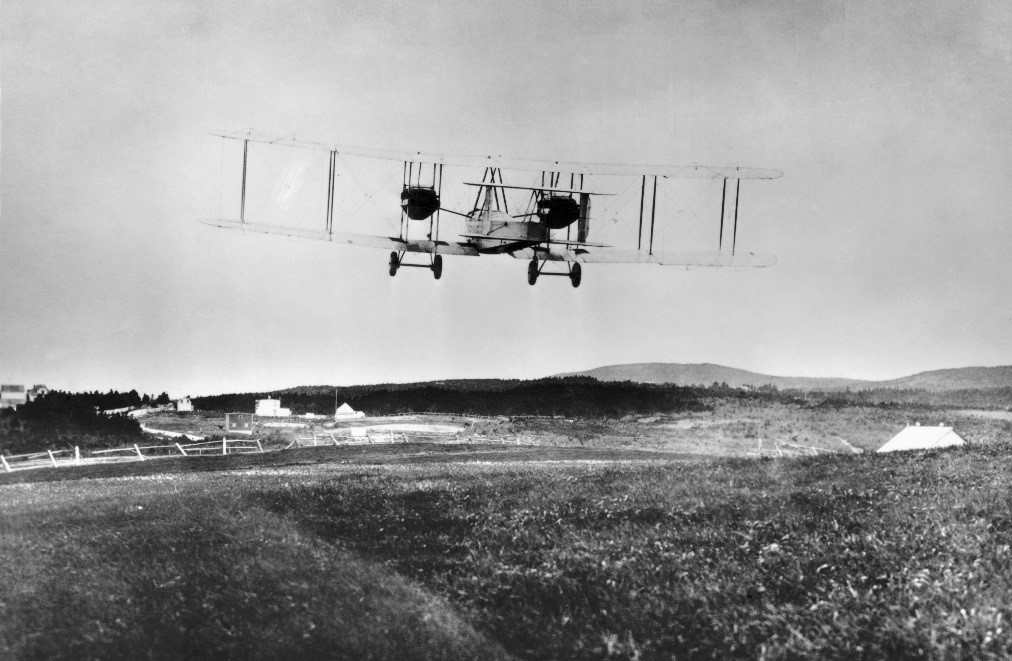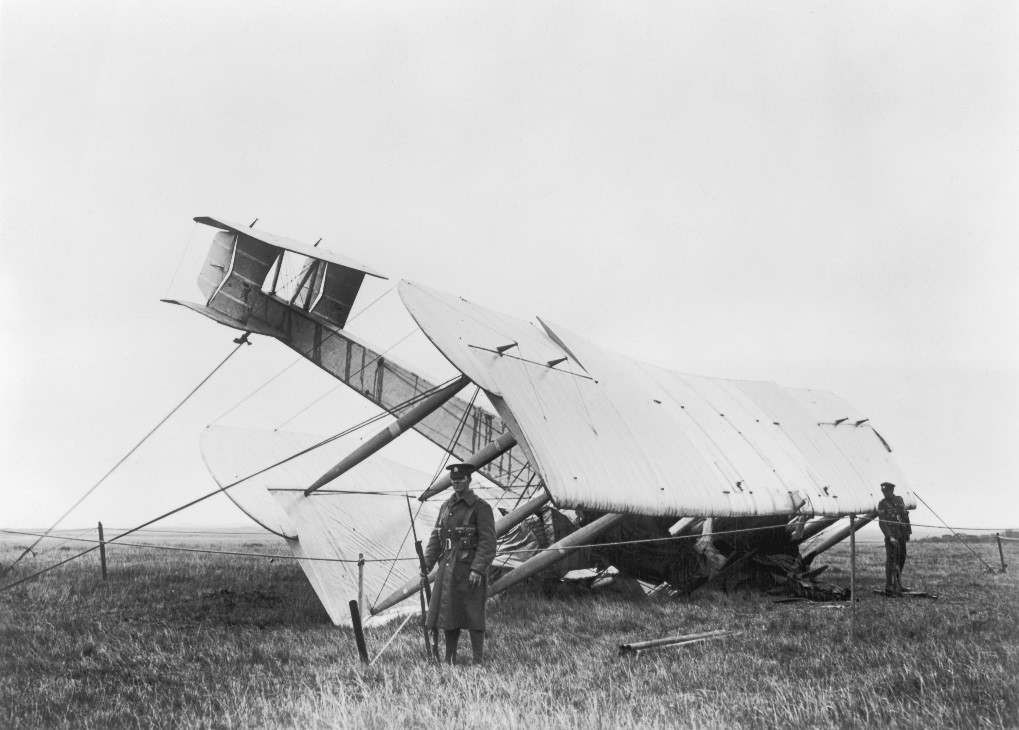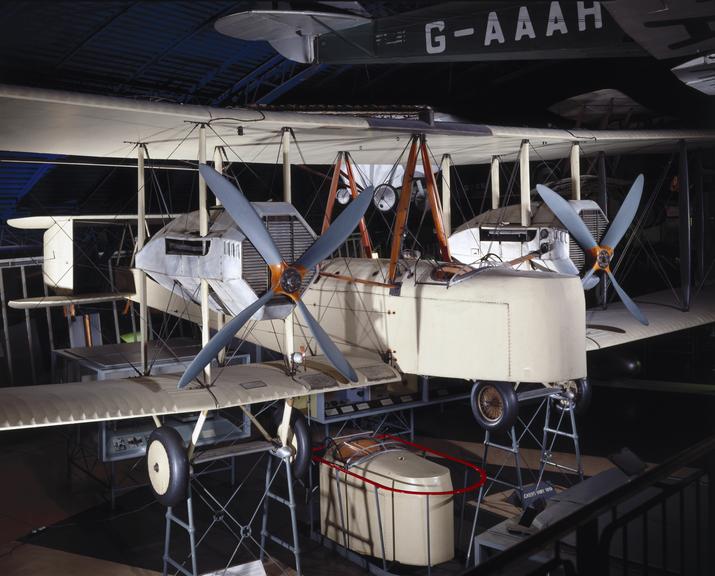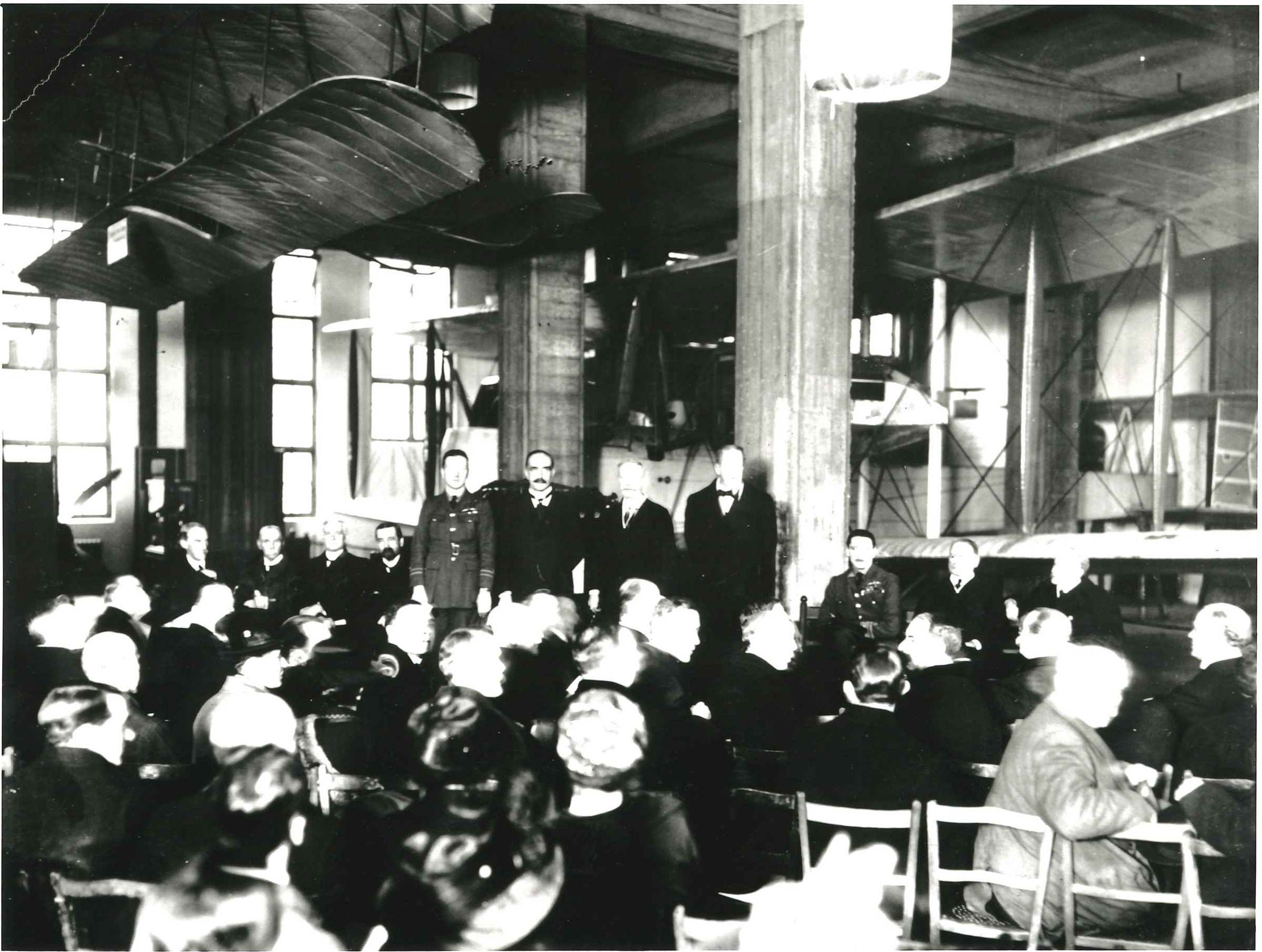A century ago, John Alcock and Arthur Brown completed the first non-stop transatlantic flight, taking off from Newfoundland on 14 June 1919 and crash-landing in a bog in Ireland on 15 June 1919.

Alcock and Brown won the Daily Mail prize for the first crossing to take less than 72 hours and were knighted by King George V.
You can see the original Vickers Vimy/Rolls Royce biplane on display in the Flight Gallery at the Science Museum and the Lucky Jim toy cat mascot that flew with Alcock and Brown at the Science and Industry Museum in Manchester.
The journey of the Vimy, however, did not finish in a County Galway bog.
After crash-landing, it was taken to the Vickers factory in Weybridge. There it had to be completely stripped down and cleared of all the mud, before being reassembled.
While the fuselage and larger parts are likely original, many of the smaller pieces of equipment were removed and replaced.

Consequently, quite a few souvenirs exist, made from parts of the original Vimy.
For instance Anne Boultwood, who worked in the erecting and doped fabric department and was the only woman to work on the Vimy, had two souvenirs from the aircraft: a light switch from the fuselage to allow Alcock and Brown to see the instrument panel and a poker made out of the RAF wire used for the rigging.
The Science Museum Group has a letter opener formerly owned by Alcock and made from the aircraft.

Bill Montague worked at the Vickers factory in Weybridge and was part of the team that helped reconstruct the aircraft for display at the Science Museum.
Supposedly, the names of those that helped reconstruct and move the Vimy are visible on the starboard fin on the tailplane. Though my trip to the Flight Gallery did not immediately reveal any.

Conversations between Vickers, the Office of Works and the Science Museum convened shortly after Vickers finished the reconstruction of the Vimy.
As there was no room to store it anywhere, it had to go on display in the upcoming Aeronautics exhibition. Construction on the new gallery was delayed, much to the frustration at times of Vickers, who had to continue storing the aircraft themselves.
Vickers clearly felt strongly about preserving this aircraft, recognising that a museum was its best chance of survival.
P. D. Acland, manager of the company’s Aviation Department wrote in a letter to the First Commissioner of Works, Alfred Mond:
‘…it is essential that an apparatus of this description should be in a good building, in view of the fact that Aeroplanes are liable to depreciate unless properly housed.
Should it be possible to put this machine into one of the principal Public Museums, it would be a permanent memorial, and remain in good condition for a great many years.’
Vickers also felt strongly about the importance and status of this modern aircraft, putting it on par with Stephenson’s Rocket, the most significant early railway locomotive.
Acland writes:
‘In making this offer, we respectfully beg to inform you that it is our sincere wish, and that of Messrs. Rolls-Royce, that this machine might be housed somewhere in the vicinity of the historic “Rocket”.’
The Under-secretary of State for Air, General John Bernard Seely, however, elevated the Vickers Vimy above Stephenson’s Rocket:
‘I should think it would be a far more interesting relic to succeeding generations than many other things which have been kept, such as Stephenson’s “Rocket”.’
Colonel Parkinson, Keeper of the Machinery and Inventions’ Division at the Science Museum disagreed, writing,
‘It is ridiculous, of course, to compare this aeroplane with the Rocket. I should think that future generations will consider the Henson and Stringfellow and the Maxim models as of more interest than a machine which crossed the Atlantic…‘
After being installed through the windows of the gallery, the Vickers Vimy was presented to the nation on the 15 December 1919 during the opening of the temporary Aeronautics Gallery.

A century on and the Science Museum is proud to display the astonishing Vickers Vimy biplane, the first aircraft to fly nonstop across the Atlantic Ocean.
Hugo Massac Buist’s prediction of what the public would think 100 years on rings true and is an excellent summary of the important contemporary collecting work that the museum continues to do:
‘We may think our machinery to-day very perfect and of the finest quality; but only a hundred years hence people will gape in amazement to think we ever got off the ground, far less than we ever flew from England to Australia, or from Newfoundland to England, on what will seem to them such crude constructions as those which appear to us to-day to be the very last word.’
See the Vickers Vimy biplane and 9 other significant moments from the history of flight in this curator’s tour of the Flight Gallery.
Discover more about the historic flight in our online story or delve into the race to cross the Atlantic in this accompanying blog post.
